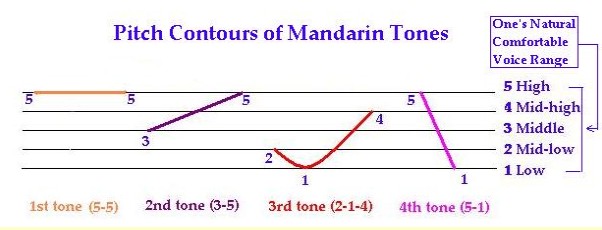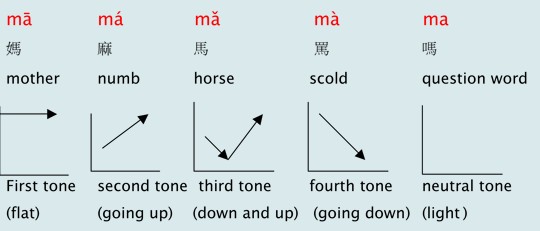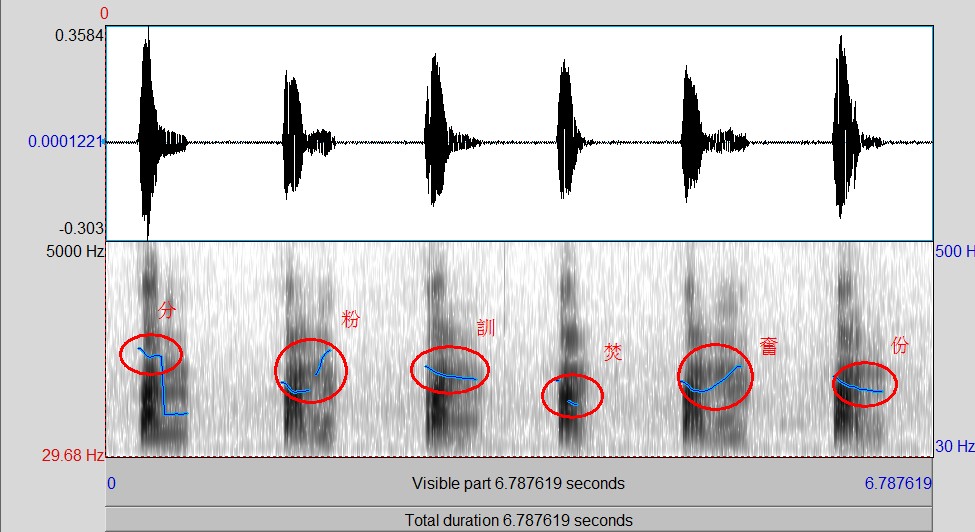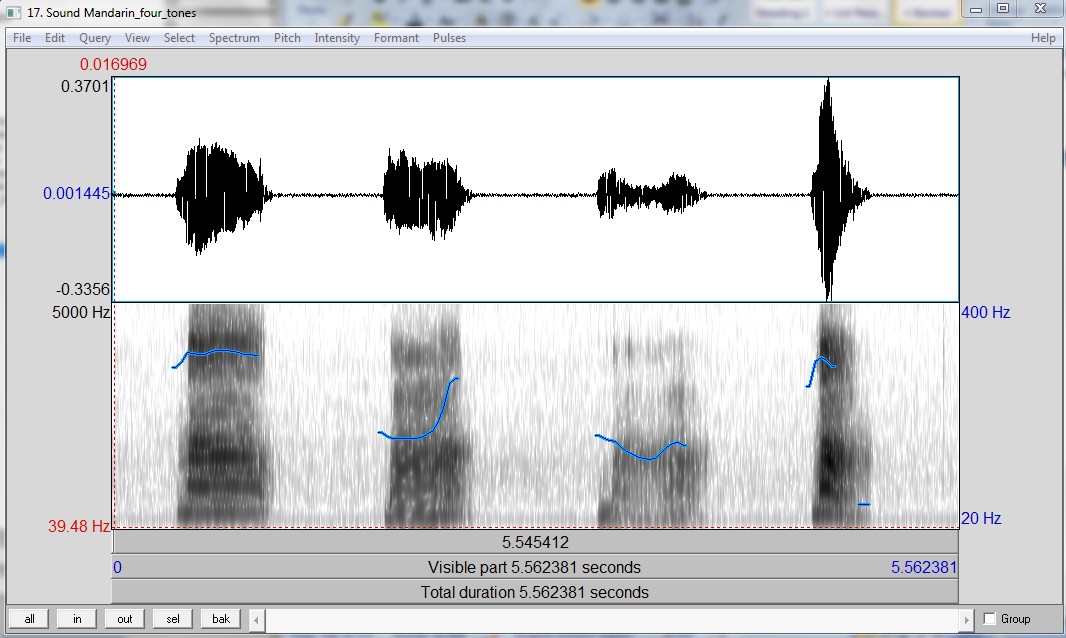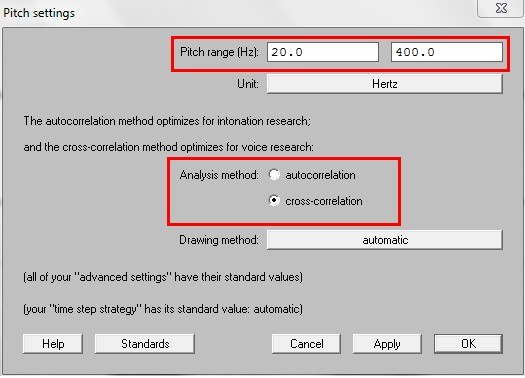4.4.1. What is tone?
As mentioned in 4.3, tone is the pitch of our voice. In Chinese, a syllable or morpheme may have its own pitch, and the tone of each character contributes to lexical meaning while in English, a series of pitches sung over a whole utterance (intonation) is the major prosodic features to indicate the meaning (Teschner & Whitley, 2004, p. 64). Therefore, 'pitch' is mainly used to analyze the tone.
4.4.2. Tones in Putonghua
Tone is a contrastive lexical property of Standard Chinese. As a tone language, there are five tones in mandarin Chinese - the first tone, the second tone, the third tone, the fourth tone and the neutral tone. We can use the “pitch” in Praat to analyze the tones in Chinese.
The diagram below shows four tones in Putonghua.
Figure 4.28
(Excerpt from http://web.mit.edu/jinzhang/www/pinyin/tones/)
Let’s take "ma" in Putonghua for example, five tones represents five different characters which have different meanings.
Figure 4. 29
(Excerpt from http://www.misspandachinese.com/resources/tones-in-chinese/)
4.4.3. Tones in Cantonese
As we know that Cantonese is another tone language which has 9 tones (the last three tones share the same pitch with first, third and sixth tone respectively).
you can listen to the sounds via the following website http://www.fyan8.com/yuepin.htm
We can also use Praat to show the six tones in Cantonese.
Figure 4.31 Six Cantonese tones
(Excerpt from http://bbs.cantonese.asia/thread-15985-1-1.html)
4.4.4. Analyzing tones
Now let's discuss how we analyze tone using Praat. We will use a recording of the four Standard Chinese words as an example.
- Created a wav file with four Chinese words mā "mother", má "hemp", mǎ "horse", and mà "scold"
- Selected the file and click "View& Edit"
- "Pitch" → tick "Show pitch"
The window is like this:
Figure 4.32
This window provides us with a graphic presentation of the variation in fundamental frequency (pitch contours) of the four Chinese tones.
- Adjust the pitch settings to make the display clearer.
I just briefed two important points here:
- First, adjust the range of analysis as men have pitch ranges in the 50-180 Hz range while women's pitch tends to be higher, 80-250 Hz.
- Second, autocorrelation is preferred for intonation studies and cross-correlation for tone studies.
(Please see 1.4.3 for more details on measuring pitch)
Figure 4.33
(Retrieved from Stoneham, 2011: p2, http://stonham.dyndns.org/phonetics/handouts/prosod_hndt.pdf)
- Draw the pitch contours
- Select an area in Picture window using the pink frame
- Select "Pitch" → "draw visible pitch contour"
- See the results in Praat picture window
(Please see 1.3.3 for more details on drawing pitch contours)
Hits: 2219

